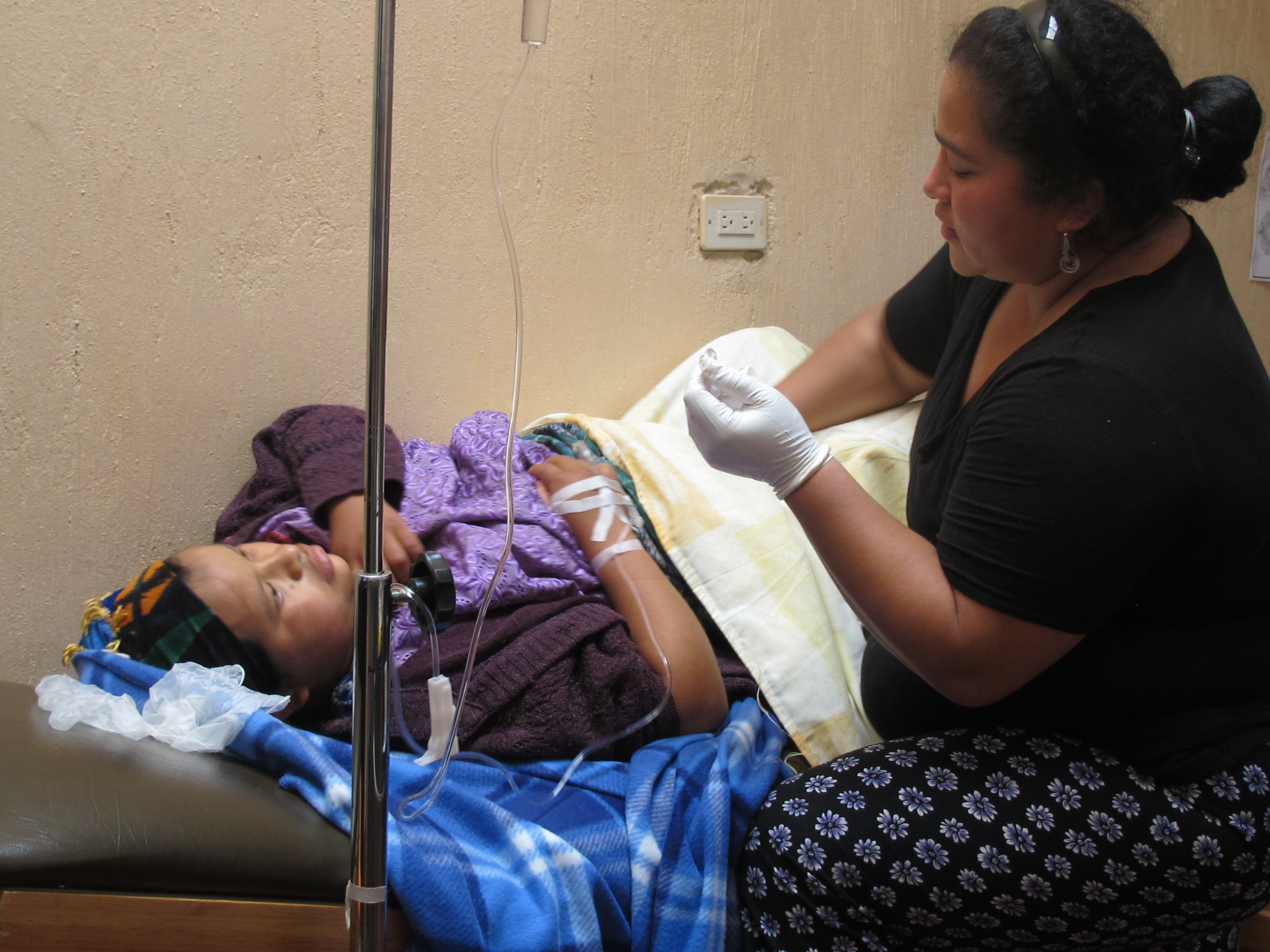In Rural Guatemala, Part Two
Posted: February 21, 2012
This is the second post of a three-part special story from Ira Stollak, KPC Consultant in Guatemala. A sort of "day in the life" in the highlands of rural Guatemala. Read part one then continue the story below as it takes an unexpected turn.
—
Lunch was delayed. Alma, who is the chief nurse-midwife of the Casa Materna, received a call from a distant village on her cell phone – a young woman had delivered the day before, but the comadrona (traditional midwife) could not extract the placenta – a retained placenta. The woman’s family was bringing her by pick-up to the Casa Materna for Alma’s attention. They arrived an hour later in a Toyota 4WD pick-up, the basic Guatemala mountain vehicle, and the woman’s uncles carried her into the Casa and laid her on the treatment table. She was in traditional Chuj attire: colorful blouse (huipol), colorful hand-woven wool skirt wrapped around her waist, wool turban around her head, shawl, and, as often is the case here, very stylish modern low-heeled shoes [seems women’s obsession with shoes applies even here in this ancient culture].
She was a child, fifteen years old, and terrified, because her mother had died of a retained placenta 8 years ago. Her husband was off in the US working, as often is the case down here. Without the money sent home from men like him who pick our crops and work in our chicken factories and slaughterhouses, and roof our homes and clean our yards, this place would be far more destitute than it is.
Alma and Carmen examined her, took her pulse and blood-pressure, took her temperature, and there was good and bad news. The good news – no fever, no bleeding, good blood pressure. The bad news – she was extremely dehydrated, and her vagina was horribly torn from the delivery – she was simply too young to have a baby. Alma immediately administered an IV of saline solution, while Carmen prepared an injection of oxytocin, which would contract the uterine muscles and help prevent hemorrhage, our main fear.

After injecting the oxytocin, Alma, with the help of Carmen and another assistant, Marta, proceeded to vigorously massage the girl’s abdomen, a proven method to help break free the placenta. After fifteen minutes, Alma tried to tug on the protruding umbilical, but the placenta would not come. Alma concluded the girl’s dehydration was further challenging their efforts so Carmen brought the girl a cup of chamomile tea, which she drank greedily through a flexible straw.
After another cup of tea and another fifteen minutes of massage, Alma again tried unsuccessfully to extract the placenta. The next thing to try was have the woman nurse her baby girl, who Erin had been cradling – tiny, red-faced, mop-topped with black hair, and apparently a healthy, though small, baby. Nursing would also contract the uterus and, if not help break free the placenta, at least the uterine contractions would help prevent hemorrhage (why it is so important to breast-feed the newborn immediately).
An hour went by of alternating massage and tugging on the umbilical without success. But the girl’s vital signs were good – no fever, no bleeding, good blood pressure (a drop in which could signal internal bleeding). It was time to send her to the nearest hospital in Huehuetenango, a good four hours away, on winding rough mountain roads. Alma called the hospital with her radio phone, which has a very strong signal, alerted them, then called the volunteer firefighters in San Antonio, two hours away. They would meet the family and the girl at the midway point, Cuatro Caminos, then carry the girl to the little hospital in their ambulance.
…stay tuned this week for the third and final post…
Share this Article
Stay Up-To-Date With Curamericas Global
We will not spam, sell or otherwise misuse your information!